WHAP Midterm
1/49
Earn XP
Name | Mastery | Learn | Test | Matching | Spaced |
|---|
No study sessions yet.
50 Terms
“If it were asked, why do we accept the theory of contagion, when already the divine law has refuted the notion of contagion, we will answer: The existence of contagion has been proved by experience, deduction, the senses, observation, and by unanimous reports. And it is not a secret to whoever has looked into this matter or has come to be aware of it that those who come into contact with plague patients mostly die, while those who do not come into contact survive. And amidst the horrible afflictions that the plague has imposed upon the people, God has afflicted the people with some learned religious scholars who issue fatwas* against fleeing the plague, so that the quills with which the scholars wrote these fatwas were like swords upon which the Muslims died. In conclusion, to ignore the proofs of plague contagion is an indecency and an affront to God and holds cheap the lives of Muslims.”
*rulings on Islamic law
Lisan al-Din Ibn al-Khatib, A Very Useful Inquiry into the Horrible Sickness, Granada, Spain, 1349–1352
The passage by al-Khatib best illustrates which of the following?
The growth of scientific thought and innovation in Muslim Spain
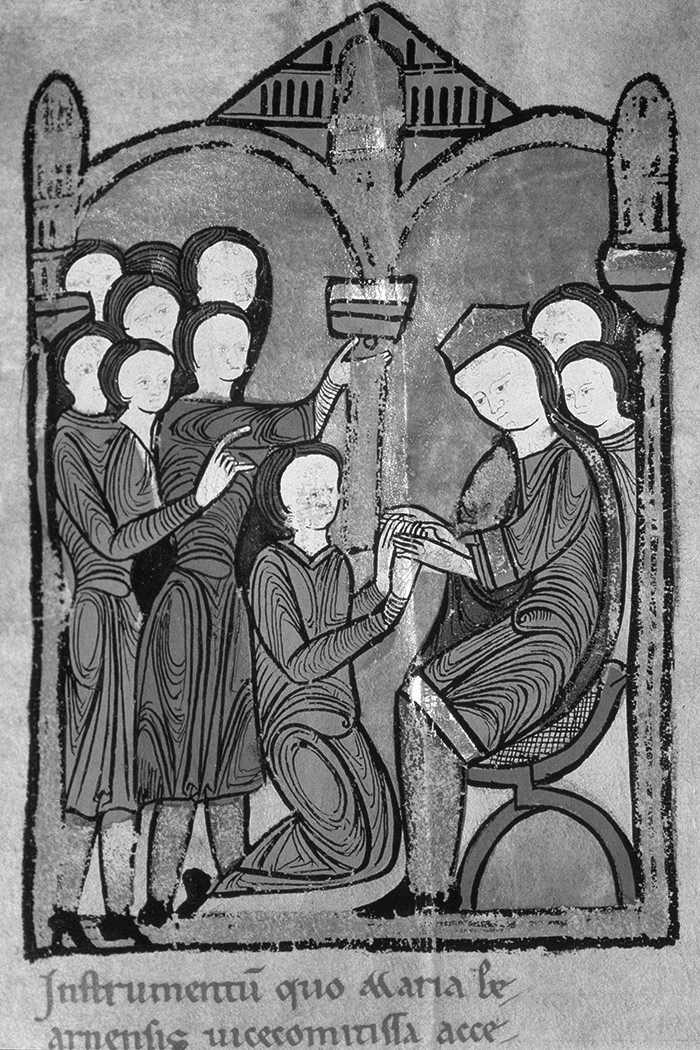
The act of the countess of Béarn in the image is most closely identified with which of the following political systems?
Feudalism
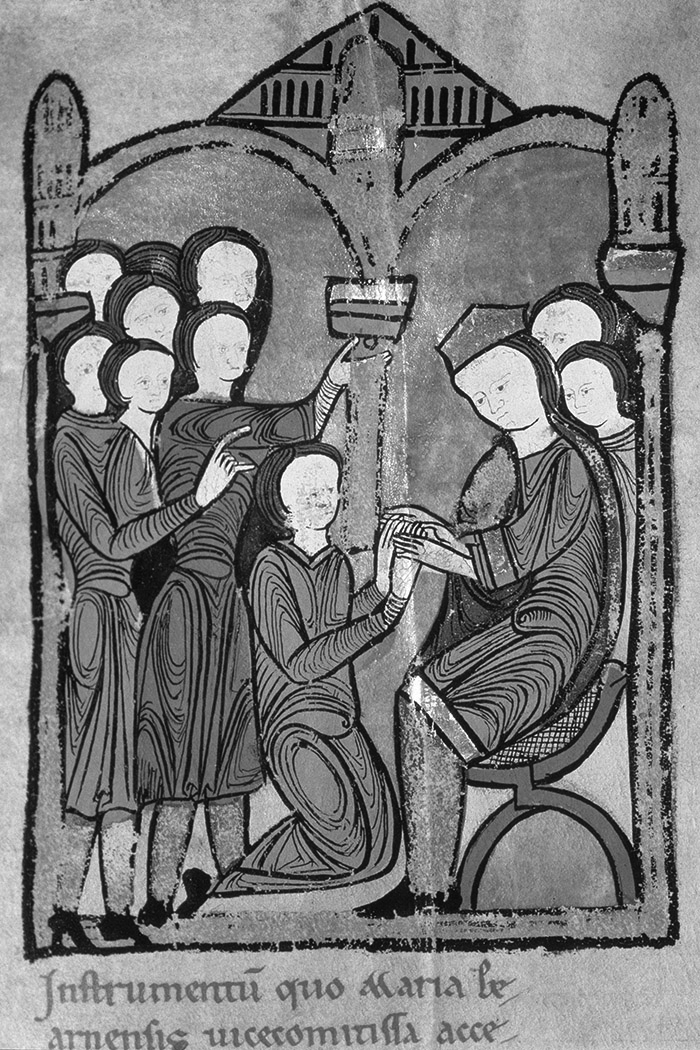
The image most directly illustrates which of the following features of the political development of medieval Europe?
Its decentralization, as European rulers frequently delegated authority to local subordinates.
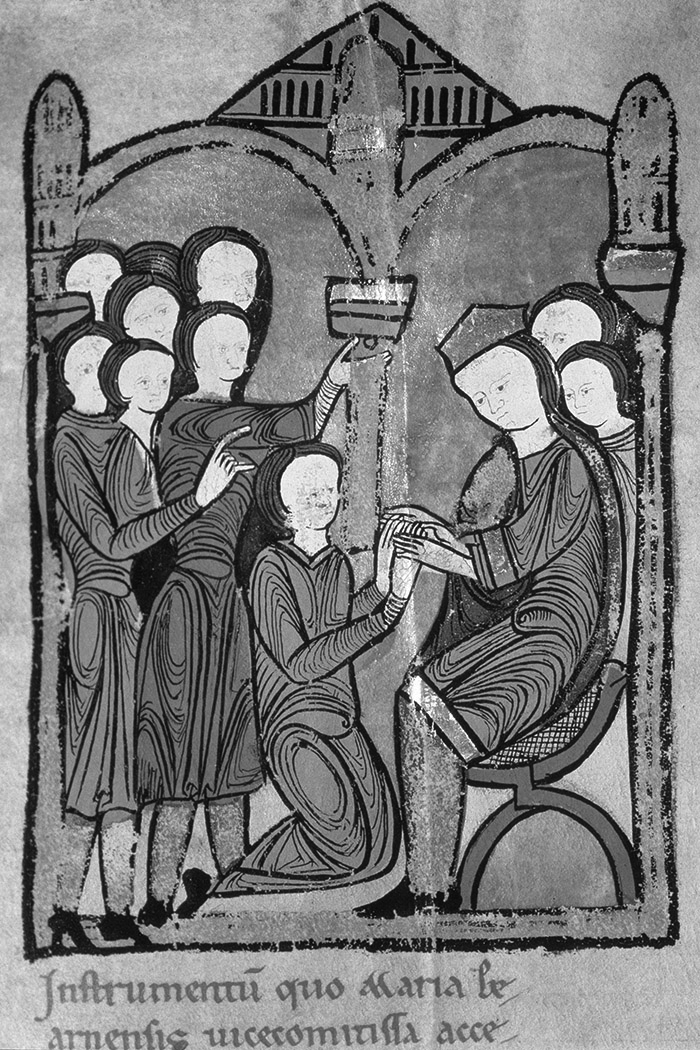
In Europe, political relationships of the type depicted in the image emerged most directly on account of which of the following developments?
Local elites’ need for military protection from more powerful lords
In the period 600 C.E. to 1450 C.E., states in Japan, Korea, and Vietnam had which of the following in common?
All were culturally influenced by China.
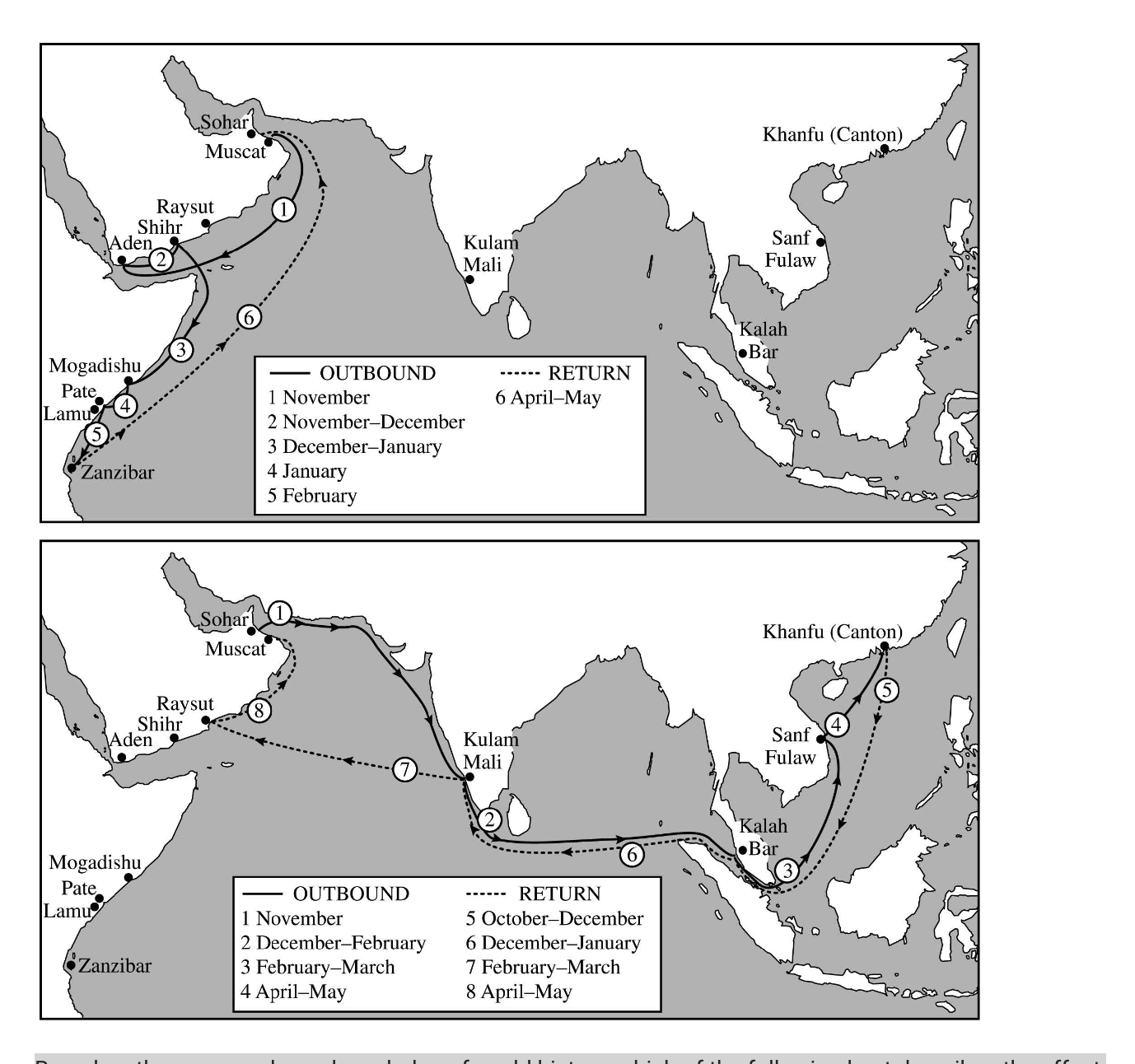
Based on the maps and your knowledge of world history, which of the following best describes the effect of the spread of Islam on Indian Ocean trade?
It led to the expansion and intensification of commerce along already existing trade routes.

Which of the following factors contributed the most to Omani traders’ ability to undertake the voyages depicted on the maps?
Navigational and maritime innovations, such as the astrolabe and lateen sail
“The East African coast was certainly known to the people of Arabia by the eighth century b.c.e. In fact, the ancient Southern Arabian state of Ausan traded extensively there and may have actually held a portion of the coast. Traders who reached the coast discovered a number of potentially valuable raw materials there. Among these were spices, tortoise shell, coconut oil, ivory, and later, gold and slaves.
It was not until almost 1000 c.e., however, that the first important commercial city-states emerged along the coast. These city-states fluctuated in wealth and prestige as they competed for coastal hegemony. Because of their way of life, they tended to have a broad regional perspective. Their destinies and fortunes were at least partly determined in distant lands by foreign merchants and rulers.
Information on early political aspects of East African states remains very limited. We know that they had kings or sultans, who wielded a good deal of power. Sultans were advised by councils of princes, elders, and members of the ruling household. It seems probable that the sultan and his close relatives controlled the religious and military offices of the state.”
Terry H. Elkiss, historian, “Kilwa Kisiwani: The Rise of an East African City-State,” article published in African Studies Review, a scholarly journal, 1973.
The example of an ancient Arabian state that traded extensively and controlled territories on the East African coast can best be used as evidence of…
the long-term continuities in state building in coastal East Africa
“The East African coast was certainly known to the people of Arabia by the eighth century b.c.e. In fact, the ancient Southern Arabian state of Ausan traded extensively there and may have actually held a portion of the coast. Traders who reached the coast discovered a number of potentially valuable raw materials there. Among these were spices, tortoise shell, coconut oil, ivory, and later, gold and slaves.
It was not until almost 1000 c.e., however, that the first important commercial city-states emerged along the coast. These city-states fluctuated in wealth and prestige as they competed for coastal hegemony. Because of their way of life, they tended to have a broad regional perspective. Their destinies and fortunes were at least partly determined in distant lands by foreign merchants and rulers.
Information on early political aspects of East African states remains very limited. We know that they had kings or sultans, who wielded a good deal of power. Sultans were advised by councils of princes, elders, and members of the ruling household. It seems probable that the sultan and his close relatives controlled the religious and military offices of the state.”
Terry H. Elkiss, historian, “Kilwa Kisiwani: The Rise of an East African City-State,” article published in African Studies Review, a scholarly journal, 1973.
The interregional connections of states such as those on the East African coast can best be used as an illustration of the continued importance of which of the following?
Long-distance trade
“The East African coast was certainly known to the people of Arabia by the eighth century b.c.e. In fact, the ancient Southern Arabian state of Ausan traded extensively there and may have actually held a portion of the coast. Traders who reached the coast discovered a number of potentially valuable raw materials there. Among these were spices, tortoise shell, coconut oil, ivory, and later, gold and slaves.
It was not until almost 1000 c.e., however, that the first important commercial city-states emerged along the coast. These city-states fluctuated in wealth and prestige as they competed for coastal hegemony. Because of their way of life, they tended to have a broad regional perspective. Their destinies and fortunes were at least partly determined in distant lands by foreign merchants and rulers.
Information on early political aspects of East African states remains very limited. We know that they had kings or sultans, who wielded a good deal of power. Sultans were advised by councils of princes, elders, and members of the ruling household. It seems probable that the sultan and his close relatives controlled the religious and military offices of the state.”
Terry H. Elkiss, historian, “Kilwa Kisiwani: The Rise of an East African City-State,” article published in African Studies Review, a scholarly journal, 1973.
The coexistence of rulers and councils of elders in African states in the period circa 1200–1450 best demonstrates
the influence of indigenous African political practices
Which of the following best supports the conclusion that Japan borrowed extensively from Tang and Song China?
Societal relations in Japan were based on Confucian principles of hierarchy.
“Seeing that it is a girl’s destiny, on reaching womanhood, to go to a new home, and live in submission to her father-in-law and mother-in-law, it is even more incumbent upon her than it is on a boy to receive with all reverence her parents’ instructions. Should her parents, through excess of tenderness, allow her to grow up self-willed, she will infallibly show herself capricious and thus alienate his affection.”
Kaibara Ekken, Japanese author, Greater Learning for Women, 1716
The excerpt above exemplifies the continued influence on eighteenth-century Japan of which of the following?
The Confucian emphasis on filial submission
“At that time, there happened great disturbances among the lower ranks of people, by which England was nearly ruined. Never was a country in such jeopardy, and all because some commoners sought to claim liberties to which they were not entitled. It is customary in England, as in other countries, for the nobility to have great privileges over the commoners, who are bound by law and custom to plow the lands of nobles, to harvest the grain, to carry it home to the barn, and to perform various other services for their lords.
The evil-disposed in these districts began to rise, saying they were too severely oppressed; that at the beginning of the world there were no unfree people, and that no one ought to be treated as such, unless he had committed treason against his lord, as Lucifer had done against God: but they had done no such thing, for they were men formed after the same likeness as their lords, who treated them like beasts. They could no longer bear this, but had determined to be free. And if they were to do any work for their lords, they demanded to be paid for it.”
Jean Froissart, French chronicler, late 1300s
The events described in the passage represent a reaction against which of the following forms of coerced labor?
Serfdom
Which of the following was the most important factor in the spread of the bubonic plague in Eurasia?
The Mongol expansion from central Asia to China, eastern Europe, and the Middle East
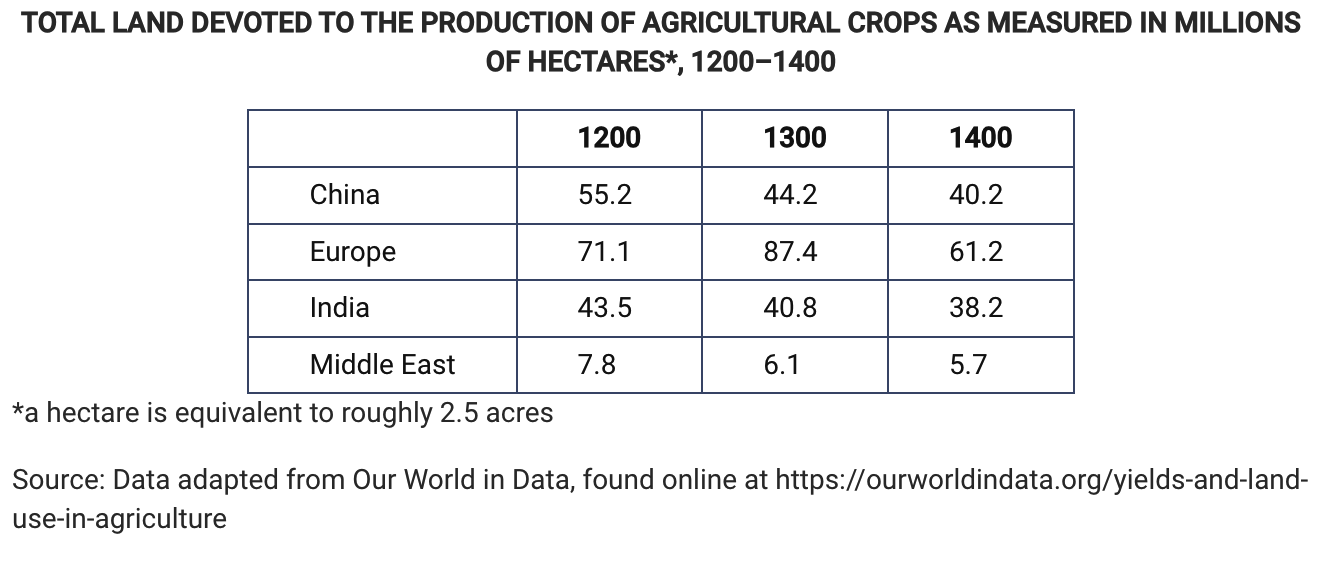
Which of the following best describes a way in which the table illustrates how an emphasis on wheat cultivation in Europe affected the total amount of land devoted to the production of agricultural crops there compared with the rice-producing regions of China and India between 1200 and 1300 ?
The total amount of land devoted to the production of agricultural crops increased considerably in Europe and declined in China and India.
Which of the following resulted from the fragmentation of the Mongol Empire following the death of Genghis Khan?
The development of khanates in Central Asia
Before 1450 C.E. which of the following is true of sub-Saharan Africa’s commercial economy?
Sub-Saharan Africa exported gold to the Middle East and Europe.
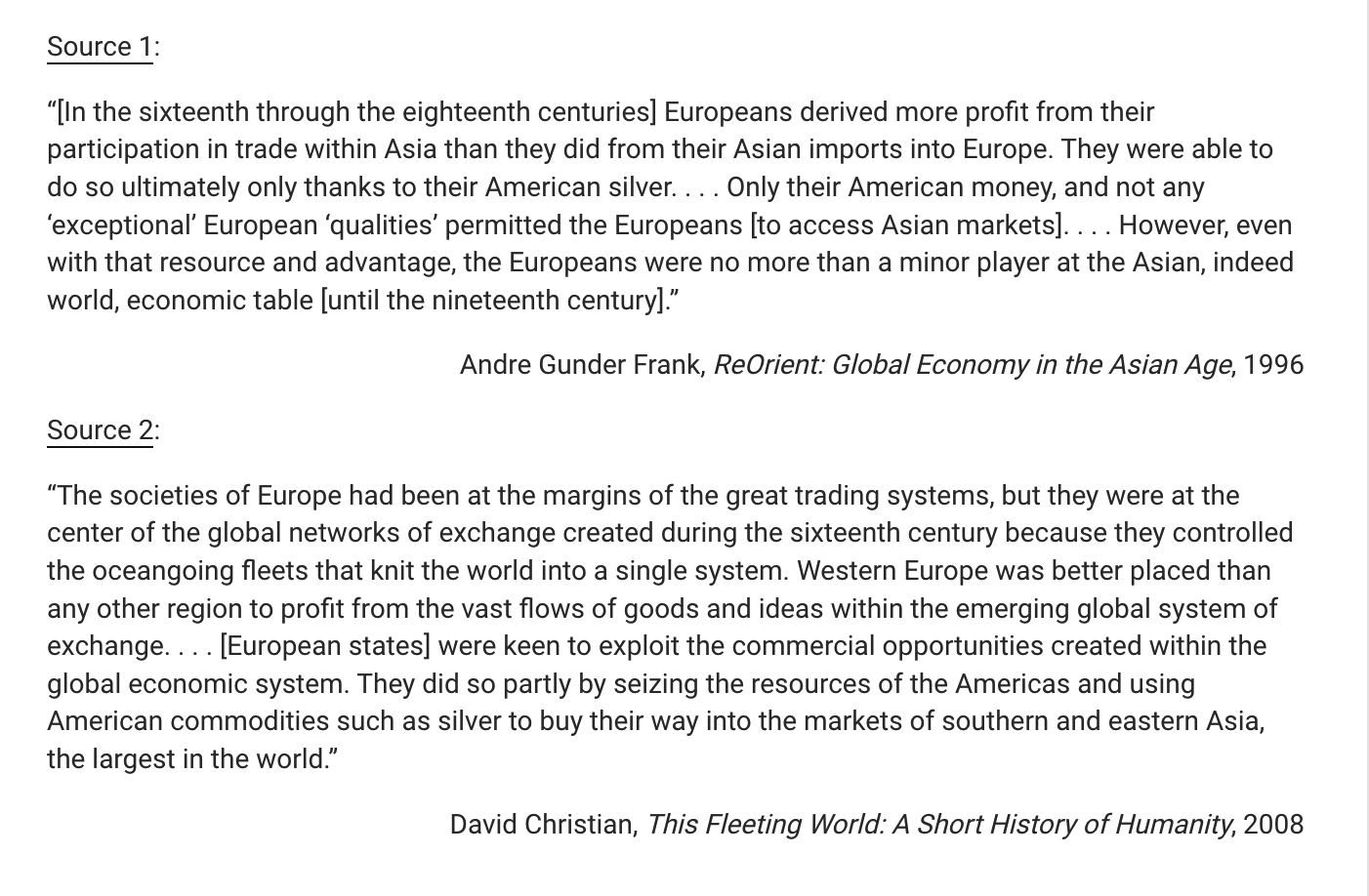
The trade networks described by the two sources were most strongly influenced by
increased European demand for luxury goods
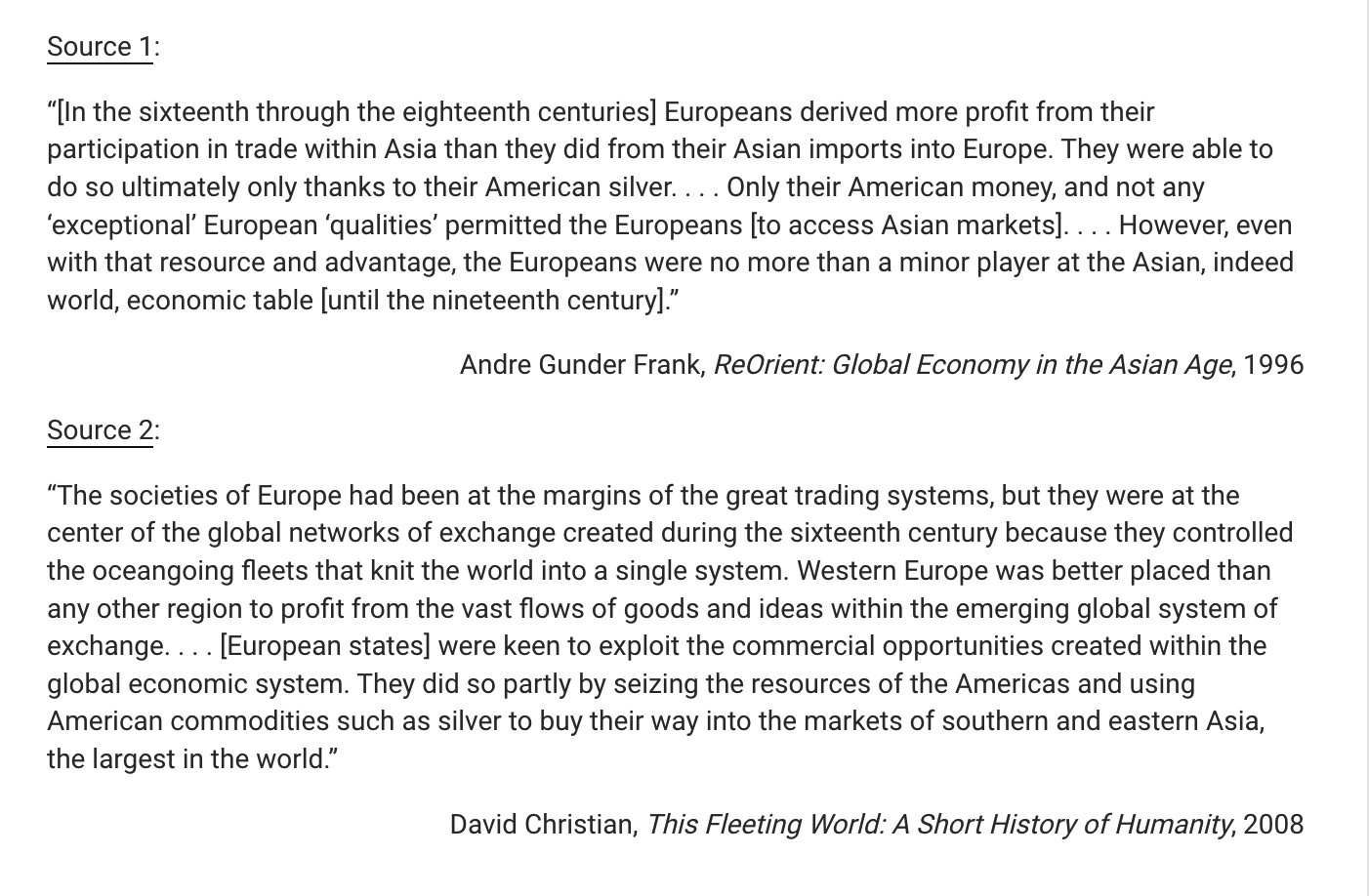
Which of the following best explains Europe’s ability to gain a greater share of global trade in the early modern period?
Adoption and improvement of maritime technologies by Europeans
Ibn Battuta traveled widely across the Middle East, South Asia, Southeast Asia, and Africa in the fourteenth century. His travels serve as evidence for the
unifying influence of Islam
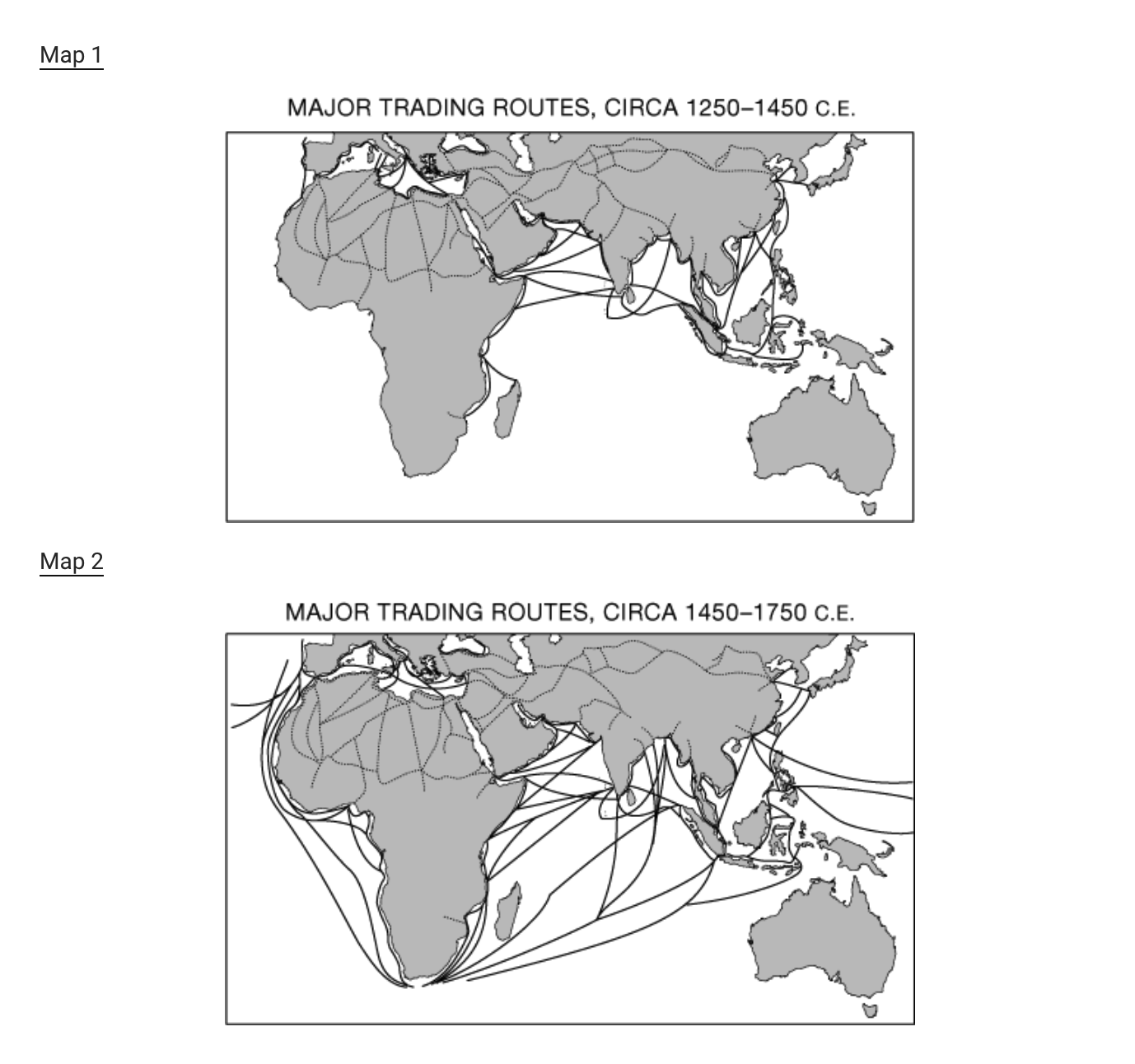
Which of the following best explains the continuity in the trade routes between East Africa, the Arabian Peninsula, and India as shown on the maps?
Trade along the routes relied on sailors’ knowledge of the monsoon winds.
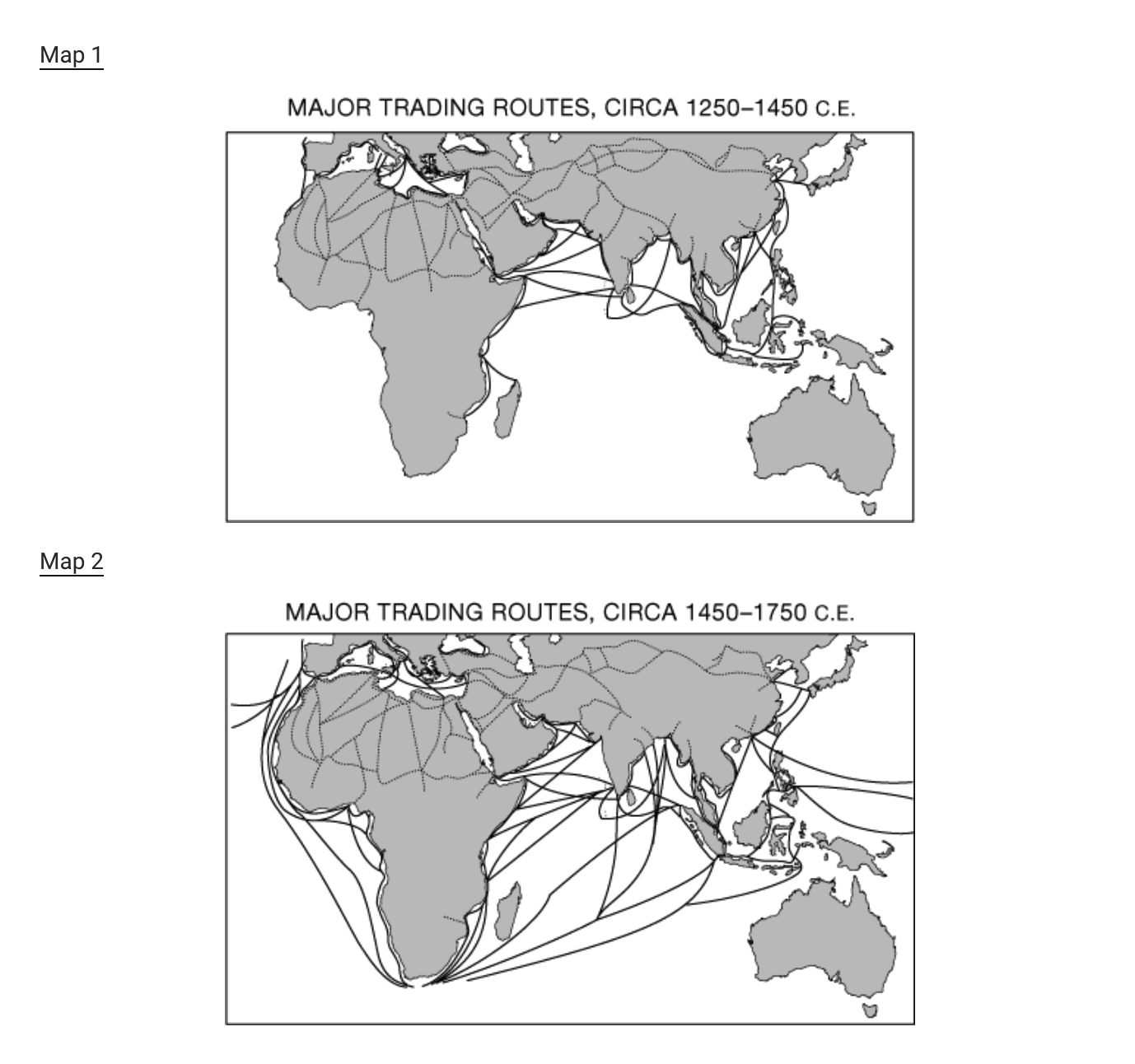
The maritime trade connections involving East Africa shown on Map 1 provided a setting for which of the following developments?
The spread of Islam
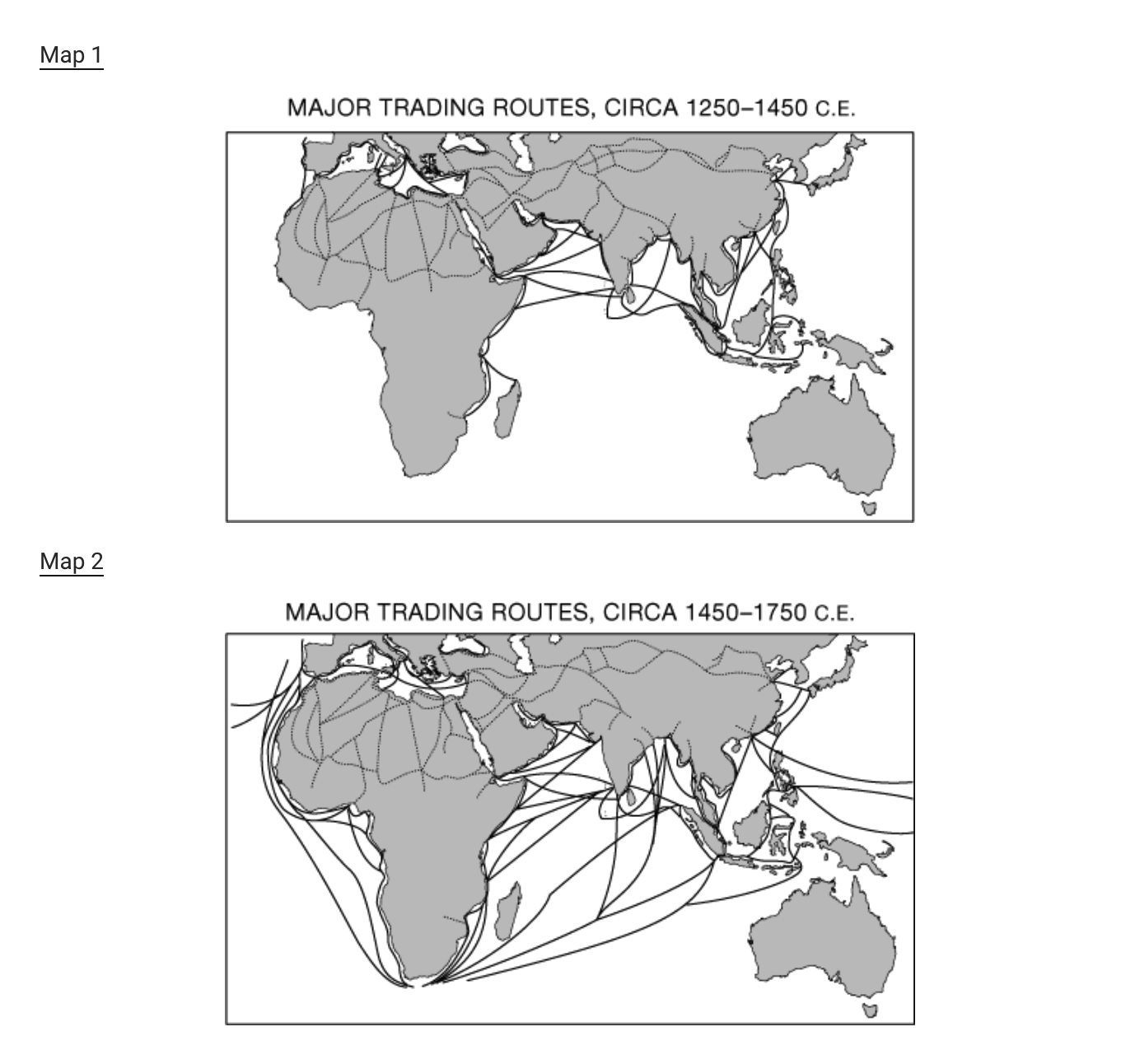
The expansion of trade routes along the coast of Africa as shown on Map 2 was most directly facilitated by which of the following?
Improved ship designs and navigational technologies
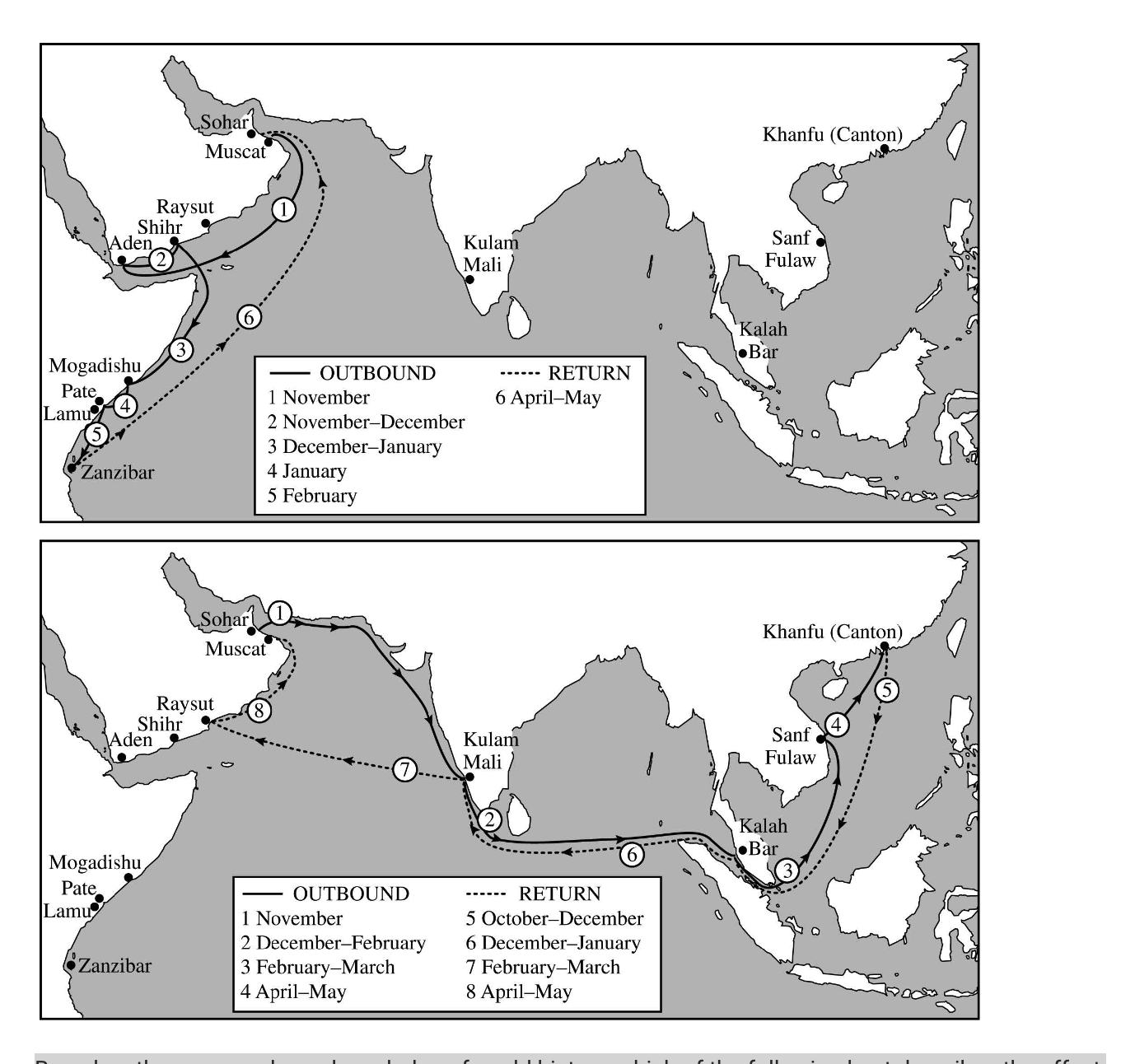
The map above demonstrates which of the following about the Indian Ocean trade?
Trade involved most of the regions bordering the Indian Ocean as well as China.
Malian Emperor Mansa Musa’s pilgrimage to Mecca in 1324 can best be understood in the context of which of the following?
The expansion of Islam throughout Afro-Eurasia

The map above indicates that
Mali was a major source and hub of the gold trade
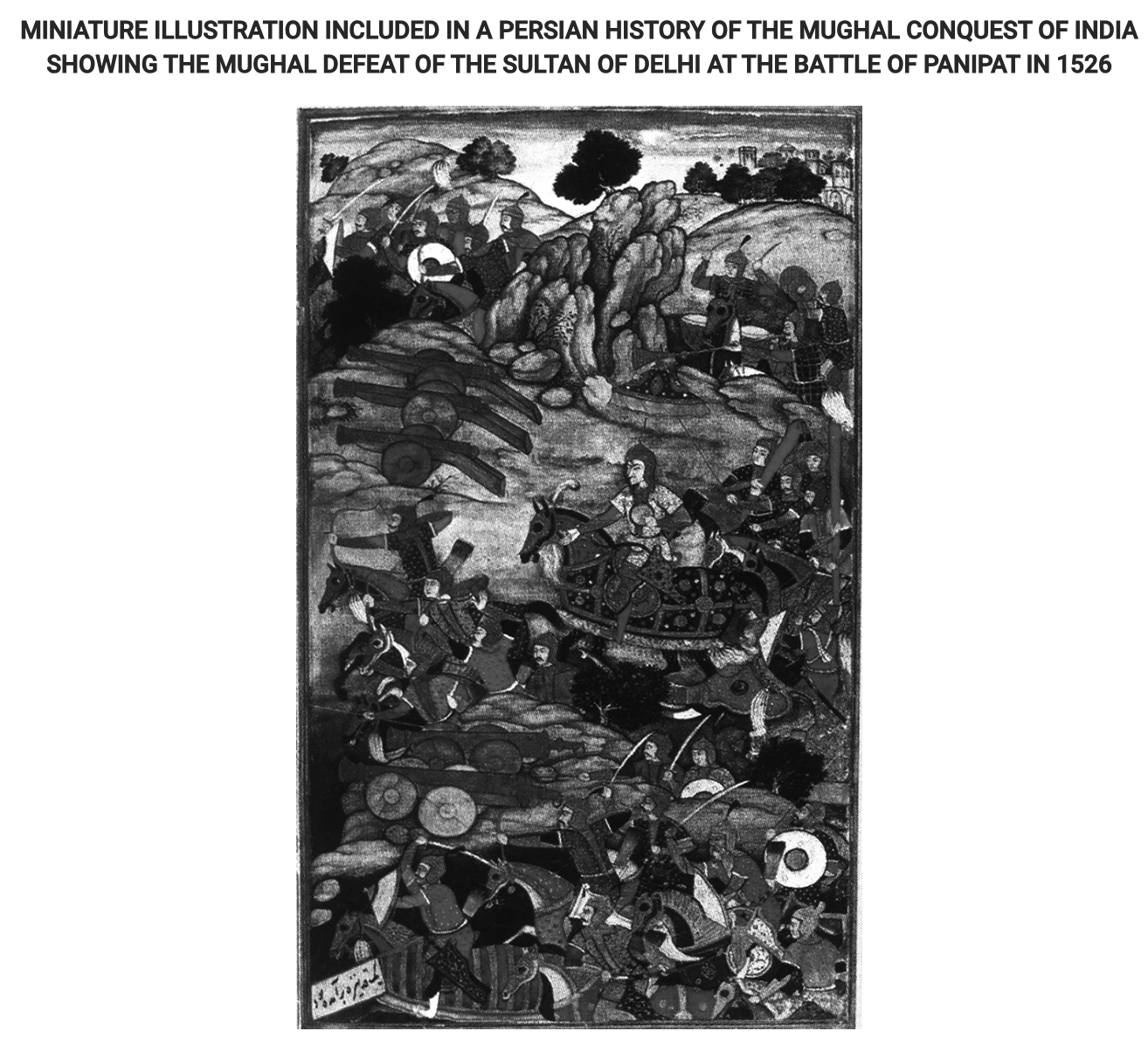
The methods of warfare shown in the image were instrumental in explaining the territorial expansion of all of the following land-based empires EXCEPT
the Aztec (Mexica) Empire
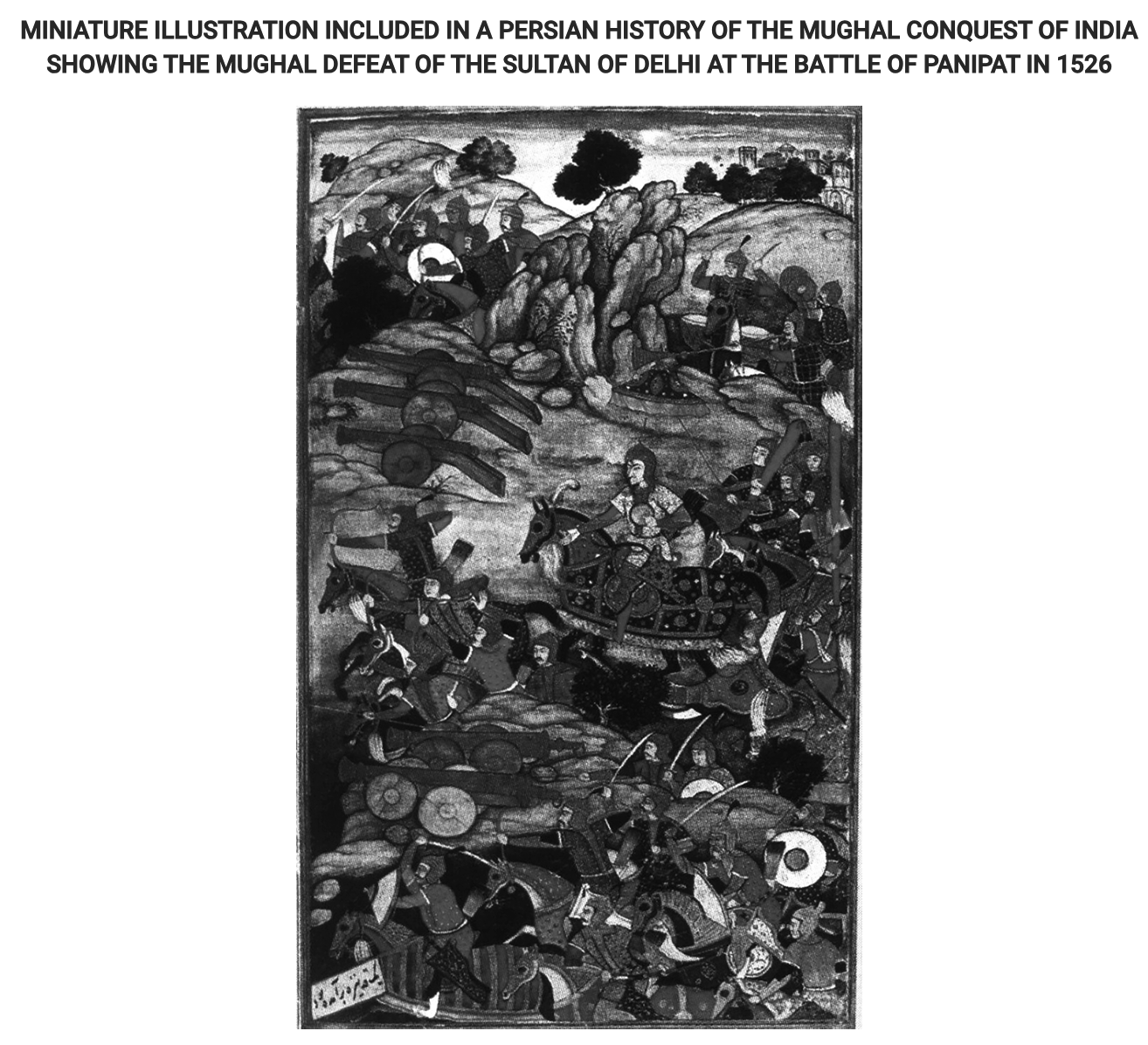
Which of the following explains the most common effect that the process illustrated in the image had on relationships between states in Afro-Eurasia in the period 1450–1750 ?
It led to deepening rivalries and conflicts as states’ military capabilities grew.
“[D]espite his ferocity, his military genius and his shrewd adaptation of tribal politics to his imperial purpose, Tamerlane’s* system fell apart at his death. As he himself may have grasped intuitively, it was no longer possible to. . . build a Eurasian empire on [nomadic] foundations. . . . The Ottomans, the Mamluk state in Egypt and Syria, the Muslim sultanate in northern India, and above all China were too resilient to be swept away by his lightning campaigns.
Indeed Tamerlane’s death marked in several ways the end of a long phase in global history. His empire was the last real attempt to challenge the partition of Eurasia between the states of the Far West, Islamic Middle Eurasia and Confucian East Asia. Secondly, his political experiments and ultimate failure revealed that power had begun to shift back decisively from the nomad empires to the settled states. . . . Lastly, his passing coincided with the first signs of a change in the existing pattern of long-distance trade, the [overland Silk Road route] that he had fought to control. Within a few decades after his death, the idea of a world empire ruled from Samarkand [Tamerlane’s Central Asian capital] had become [a fantasy].”
*a Turko-Mongolic ruler who conquered much of Central Asia and the Middle East in the late 1300s and early 1400s.
John Darwin, British historian, After Tamerlane: The Rise and Fall of Global Empires, 1400–2000, published in 2008
Which of the following developments in the late fifteenth century could best be used as evidence to support Darwin’s argument in the second paragraph regarding a change in patterns of long-distance trade?
The discovery of maritime routes that linked Europe and Asia through the Indian Ocean
“[D]espite his ferocity, his military genius and his shrewd adaptation of tribal politics to his imperial purpose, Tamerlane’s* system fell apart at his death. As he himself may have grasped intuitively, it was no longer possible to. . . build a Eurasian empire on [nomadic] foundations. . . . The Ottomans, the Mamluk state in Egypt and Syria, the Muslim sultanate in northern India, and above all China were too resilient to be swept away by his lightning campaigns.
Indeed Tamerlane’s death marked in several ways the end of a long phase in global history. His empire was the last real attempt to challenge the partition of Eurasia between the states of the Far West, Islamic Middle Eurasia and Confucian East Asia. Secondly, his political experiments and ultimate failure revealed that power had begun to shift back decisively from the nomad empires to the settled states. . . . Lastly, his passing coincided with the first signs of a change in the existing pattern of long-distance trade, the [overland Silk Road route] that he had fought to control. Within a few decades after his death, the idea of a world empire ruled from Samarkand [Tamerlane’s Central Asian capital] had become [a fantasy].”
*a Turko-Mongolic ruler who conquered much of Central Asia and the Middle East in the late 1300s and early 1400s.
John Darwin, British historian, After Tamerlane: The Rise and Fall of Global Empires, 1400–2000, published in 2008
Which of the following most strongly contributed to the shift of power from nomadic empires to settled states that Darwin identifies in the second paragraph?
The development and spread of gunpowder weapons across Eurasia
Which of the following accurately describes a significant difference between the Ottoman and Mughal Empires in the early seventeenth century?
The Ottomans ruled over people who were predominately Muslim, while the Mughals did not.
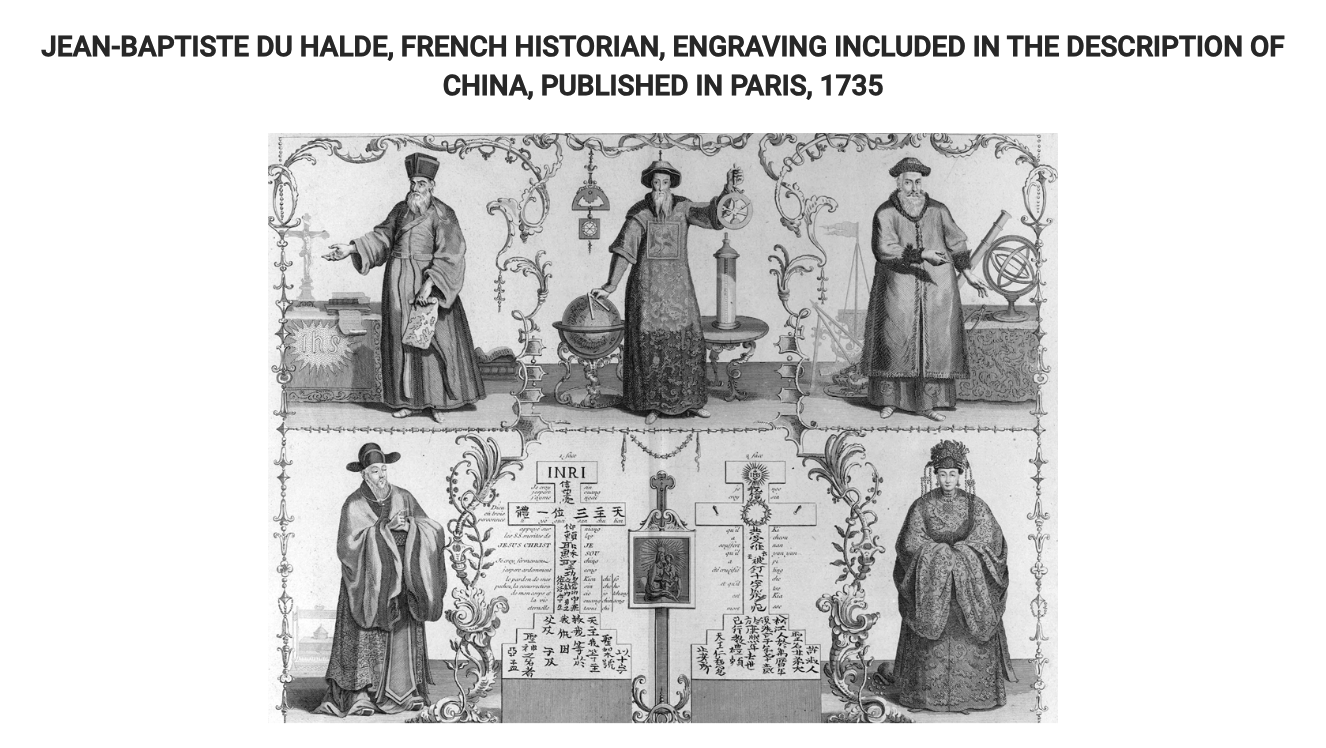
Which of the following developments in Europe in the sixteenth and seventeenth centuries most directly helps to explain the presence of the scholars shown in the image of China?
The Protestant Reformation led the Catholic Church to seek new converts outside of Europe.
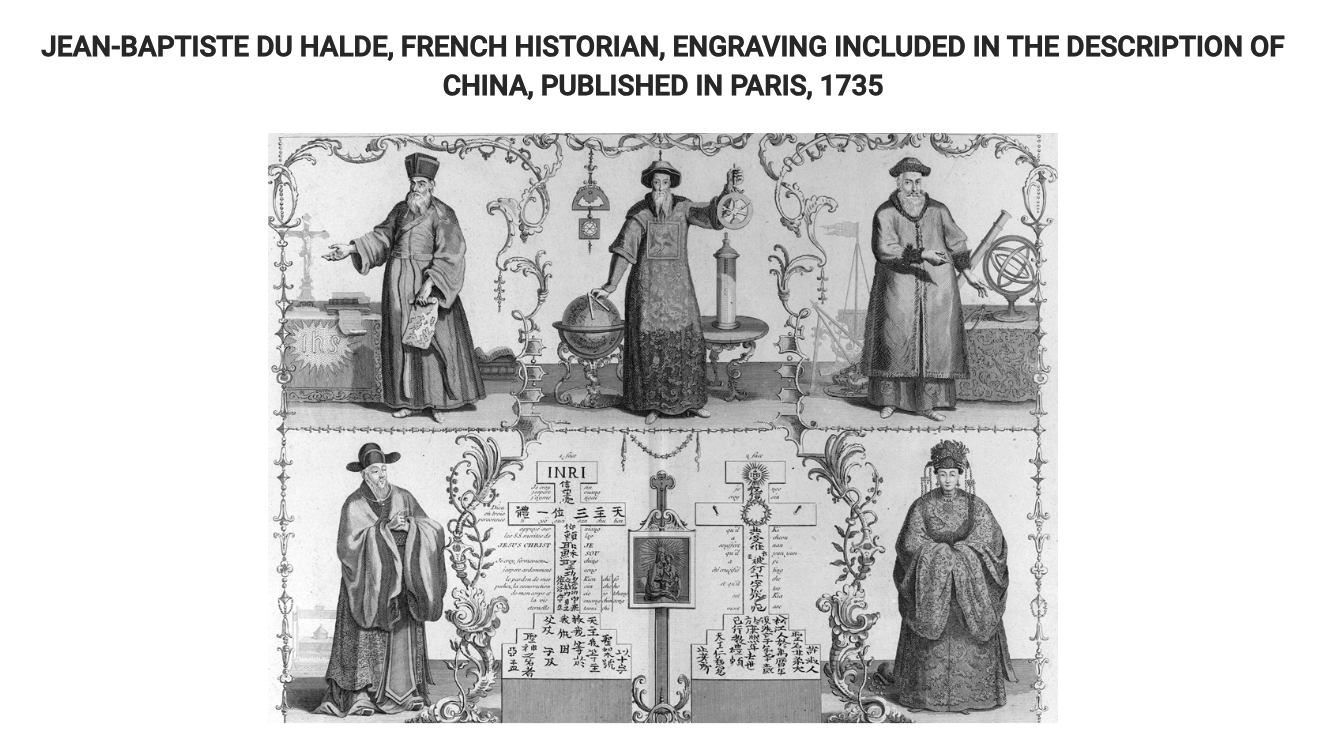
The spread of new cultural ideas, such as those illustrated by the religious beliefs of Xu Guangxi and Candida Xu, most strongly encouraged some Asian governments in Eurasia in the period 1450–1750 to
limit trade and other contacts with foreigners
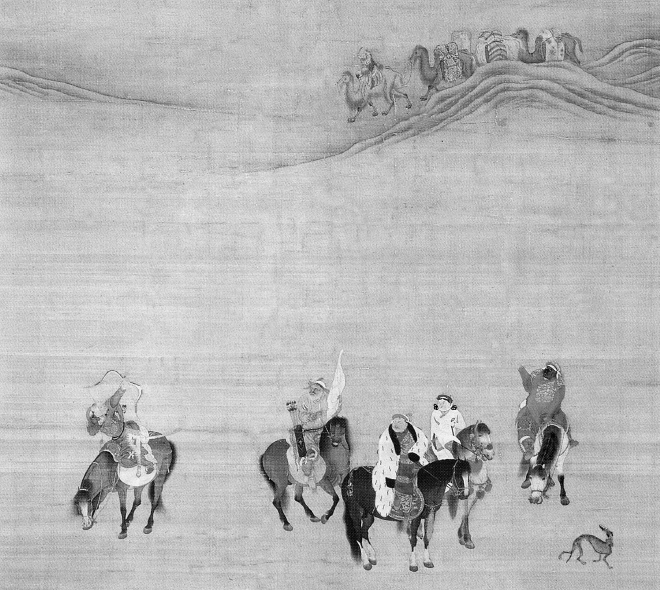
Which of the following conclusions is best supported by the way Khubilai Khan chose to have himself portrayed in the painting?
The nomadic tradition depicted in the painting would bolster Khubilai Khan’s claim to be the legitimate successor to Genghis Khan.
Between 1450 and 1750, empires such as the Ottoman and Chinese shared which of the following?
The use of a large bureaucracy to support the government
Which of the following is a similarity between the Ottoman and Chinese governments during the period 1450—1750 ?
An extensive governmental bureaucracy
“The Jiaqing emperor asked the governor Sun Yuting: ’Is Britain wealthy and powerful?’
Sun Yuting responded, ‘Britain is larger than other European countries and is, therefore, powerful. But its power comes from its wealth, which is derived from China. This country is allowed to trade at the port of Canton. It exchanges its goods for our tea. It then resells the tea to Europe and to its colonies in the West, thus becoming wealthy and powerful. Yet, tea is as important to the West as rhubarb is to Russia. If we put an embargo on tea exports, Britain will fall into poverty and its people into sickness. How powerful, then, could Britain possibly be compared to China?’”
Sun Yuting, governor of the southern Chinese province of Guangdong, autobiographical account of his conversation with the Jiaqing emperor of the Qing dynasty, early nineteenth century
The emperor’s question to Sun Yuting was most likely intended to assess which of the following?
The relative risks of continuing to pursue a trade policy that forced foreign states to acknowledge China’s political superiority
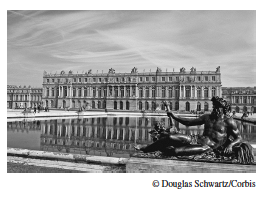
Which is the most likely reason that rulers during the seventeenth century built elaborate palaces such as the one at Versailles, France, shown above?
To demonstrate their wealth and power
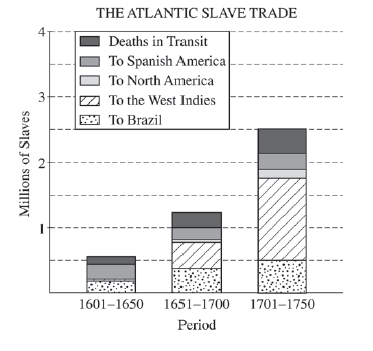
The trend shown on the graph above is best explained by
increased production of cash crops like sugar
“Americans . . . who live within the Spanish system occupy a position in society as mere consumers. Yet even this status is surrounded with galling restrictions, such as being forbidden to grow European crops, or to store products that are royal monopolies, or to establish factories of a type the Peninsula itself does not possess. To this, add the exclusive trading privileges, even in articles of prime necessity . . . in short, do you wish to know what our future held?–simply the cultivation of the fields of indigo, grain, coffee, sugarcane, cacao, and cotton; cattle raising on the broad plains; hunting wild game in the jungles; digging in the earth to mine its gold.”
Simón Bolívar, “Jamaica Letter,” 1815
Bolívar was describing the effects of which of the following economic policies?
Mercantilism
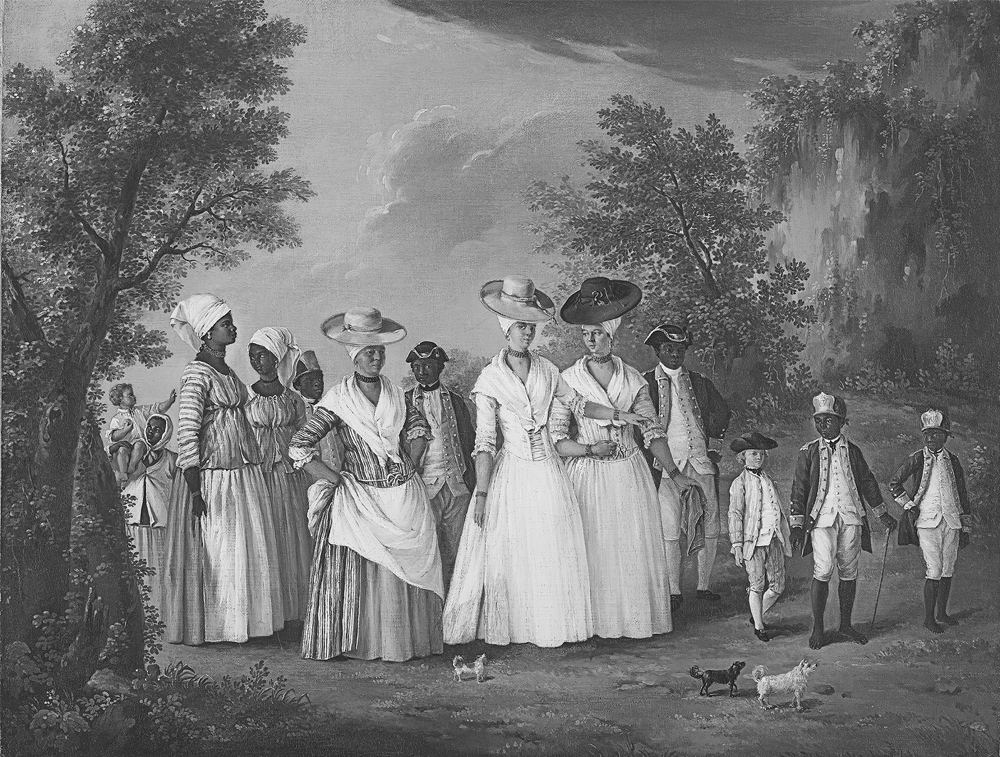
Which of the following most directly led to the arrival of substantial numbers of Africans in the Americas at the time of the painting?
The expansion of the plantation system for growing sugarcane and other crops

Which of the following most directly led to the arrival of substantial numbers of Africans in the Americas at the time of the painting?
The expansion of the plantation system for growing sugarcane and other crops
Which of the following consequences of the Columbian Exchange most affected Amerindians in the sixteenth century?
Diseases caused pandemics.
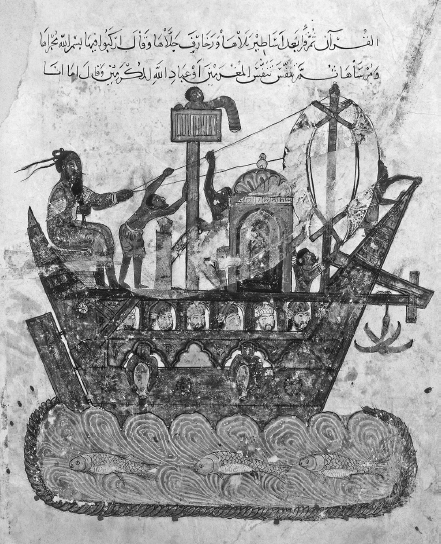
Muslim maritime activities in the Indian Ocean would be most disrupted by which of the following sixteenth-century developments?
The arrival of Portuguese and other Europeans
The Columbian Exchange involved which of the following new connections in the era 1450–1750?
African population to the Western Hemisphere; Western Hemisphere food to Europe and Africa; African and European diseases to the Western Hemisphere
“In countries where there is a great scarcity of money, all other saleable goods, and even the labor of men, are given for less money than [in countries] where money is abundant. Thus we see by experience that in France (where money is scarcer than in Spain) bread, wine, cloth, and labor, are worth much less. And even in Spain, in [recent] times when money was scarcer than it is now, saleable goods and labor were given for much less.”
Martín de Azpilcueta Navarro, Spanish scholar, treatise, 1556
Navarro’s economic observations expressed in the passage above are best understood in the context of which of the following?
The influx of silver from the Americas into the Spanish economy
Which of the following best exemplifies mercantilism as it was practiced in the Atlantic trading system by 1750 ?
The protection of European merchant companies by their respective governments
Which of the following factors best explains why the Portuguese did not engage in direct trading relations with West African states until the fifteenth century?
Lack of the necessary navigational and maritime technology
Which of the following would best support the assertion that hierarchies based on racial classification emerged after 1500 C.E. to maintain the authority of new elite groups in the Americas?
The use of terms such as mestizo, mulatto and creole